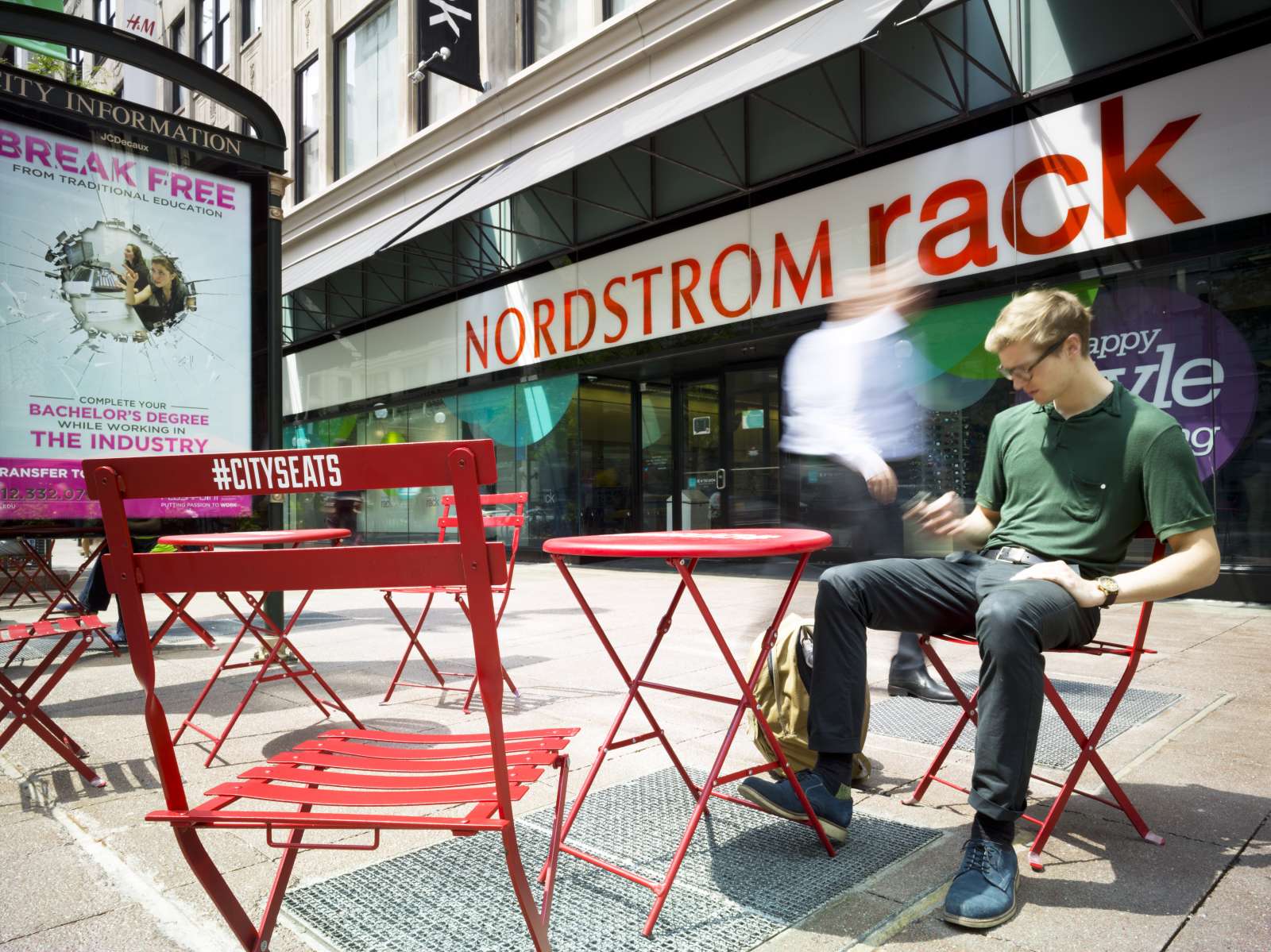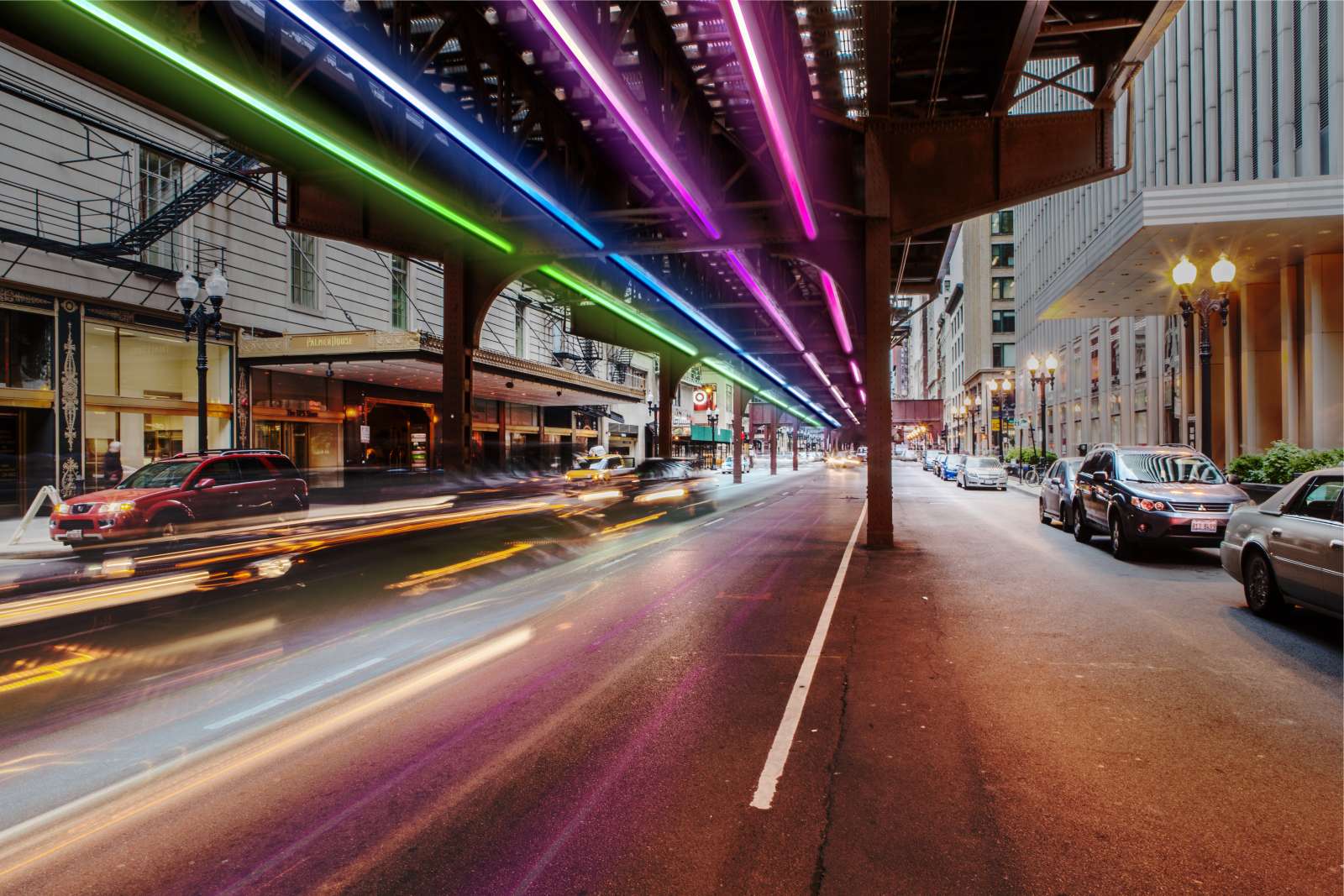Posted 7 years ago in Trending by Jessica Cabe
Wabash in the Loop isn’t what it used to be—and its transformation is no accident.
The one-year anniversary of the Washington and Wabash CTA station may have the street at the top of Chicagoans’ minds, but the station isn’t the only change that’s hit Wabash in the past few years, and even more revitalization is yet to come.
Many of the efforts on Wabash have been led by Chicago Loop Alliance, which assembled a task force of property managers, business owners, and other stakeholders to imagine, and then bring to life, the future of the street.
“The idea is to make Wabash a destination,” said Michael Edwards, President and CEO of Chicago Loop Alliance. “In 2013, we completed our strategic plan, and the number one project in the area of economic development was transforming Wabash.”
When Millennium Park opened in 2004, Chicago Loop Alliance noticed that visitors to the park were walking up and down Michigan, and Wabash was functioning as an “urban edge”—pedestrians on Michigan couldn’t really see past Wabash to State Street because of the L tracks.
“Michigan Avenue was a destination, State Street was a destination, and we thought Wabash is so unique that it ought to be a go-to destination, too,” Edwards said. “The idea was to transform Wabash so that instead of a divide, it’s a connector that would encourage people to move between those two centers of energy, Michigan and State.”

These efforts have been accompanied by the work of outside organizations, too, like the City of Chicago Department of Cultural Affairs and Special Events’ artsy creatures hanging from the L tracks, and a mural project coming soon to Harold Washington College.
“We are currently working with DCASE on the mural project,” said Ignacio Lopez, President of Harold Washington College. “The goal would be to have a mural on the Wabash side of the building that wraps around the back alley. How great would it be for our students, and the Loop community—and Chicago—to have this mural?”
There are also a few major developments in the works on this stretch of Wabash that will likely significantly increase the pedestrian count. A 39-room boutique hotel is planned for the 136-year-old Jewelers Building at 19 S. Wabash. And Cedar Street is in the midst of redeveloping the 93-year-old building at 30 E. Adams St. (part of which faces Wabash) into a 176-unit residential property with street-level retail.
Will Murphy, managing partner of Cedar Street, said the quirks of Wabash compared to Michigan or State can actually be an asset to a developer.
“I think public and private investment into the Wabash corridor has changed the landscape over the last five years,” Murphy said. “We’re excited about the future.”

Another development in the works could be the key to turning Wabash into a destination for visitors and Chicago residents alike: Wabash Lights. The project hopes to bring an interactive art installation that utilizes light and technology to the L tracks themselves.
“The thing I’m most excited about is our collaboration with DePaul and Chicago Public Schools teachers to build a STEAM curriculum for CPS students to program the lights,” said Maria Demopoulos, board chair of Wabash Lights. “The curriculum is modular. So in earlier lessons, students will evaluate competing design concepts and think through how to visually represent an idea on the lights. In later lessons, they can connect the lights to musical instruments or dance movements.”
Edwards said the combined efforts of Chicago Loop Alliance, private industry, and other non-profits will continue to transform Wabash into the destination he always knew it could be.
“In the future, maybe there are cool lights, the creatures are there, you’re sitting in a street cafe of a new restaurant, you’re staying in a hip new hotel—these things start to work together to make the street more of a place to go, a place to be,” he said. “Maybe there’s a one-liner somewhere in there: ‘The Wabash District: Where the weird meets with wonderful.’”
